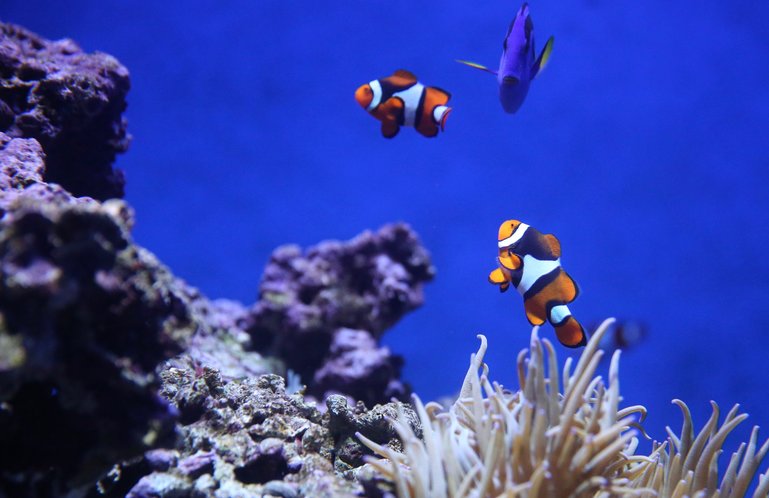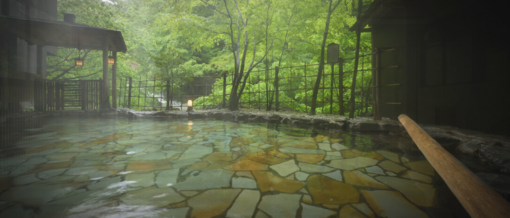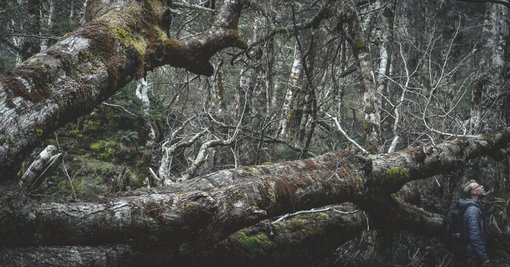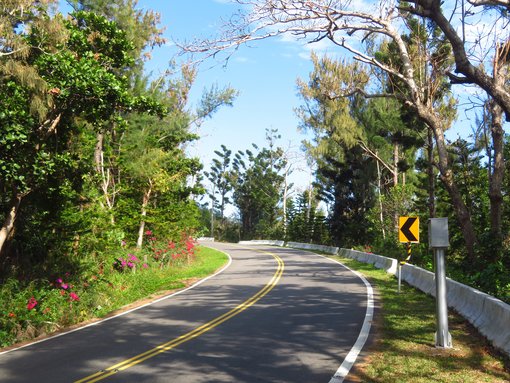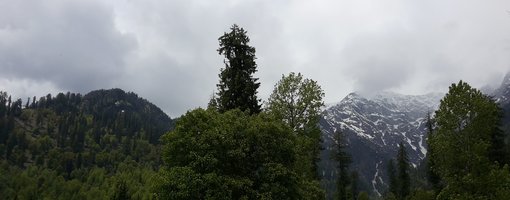Planet Earth is a truly mesmerising expanse of beauty. Over the course of billions of years, the Earth’s surface has undergone a dramatic evolution giving us the majestic landscapes we see today. There is such a large variety of geological compositions from tropical rainforests, snow-capped mountains, pink lakes and majestic glaciers.
Many of these natural wonders are now under threat. Sadly, this means that our future could see the destruction and disappearance of many of these wonders. In the 100 years from 1950 to the year 2050, it seems we will see the greatest geological changes to the Earth in modern human history.
It’s not all doom and gloom however, as there is still an opportunity to visit and explore these unique treasures before they are well and truly gone forever.
Here is a list of what I consider to be the greatest natural wonders of the world to experience before they are lost indefinitely.
The Great Barrier Reef
The Great Barrier Reef is an ancient marine island formation that follows the coast of Queensland in Australia. It is gigantic in size, spanning 2,800 km and can even be seen from space. Despite the name, the Great Barrier Reef actually consists of almost 3,000 reefs and is home to complex ecosystems of marine life ranging from molluscs, crustaceans and reptiles to the more alien-like ascidians. Perhaps what the Great Barrier Reef is most famous for are the colourful species of coral that date back more than 20 million years.
Uncharacteristic increases in water temperature from short-term events such as forest fires kill the algae that the coral feed on and as a result they become bleached, often to the point of death. The gradual warming from climate change is also known to be a considerable factor in the degradation of this magnificent natural wonder. Although it is possible for the coral species to regenerate it is a slow process. At present, half of the Great Barrier Reef has died, resulting in a dull, lifeless appearance.
The Amazon Rainforest
The Amazon Rainforest is the largest tropical rainforest on Earth. It covers an area of over 5 million sq. km reaching into Bolivia, Peru, Ecuador, Colombia, Venezuela, Guyana, Suriname and French Guiana. The rainforest is not only home to an immense ecological population and rare unique animals that can’t be seen anywhere else in the world, but it is also estimated that over 500 different tribes live there. Also referred to as ‘the lungs of the earth’, the rainforest is also a vital cooling centre for moderating the Earth’s climate.
Deforestation of the rainforest began in the late 1960s for cattle ranching and agriculture and has not slowed much since with roughly 18% of the rainforest either burned or cut down.
The Maldives
The Republic of Maldives is a collection of more than 1000 islands located more than 1000km from the Asian continent in the Arabian Sea, part of the Indian Ocean. The Maldives is world-famous for its brilliant white beaches, elegant sandbars and crystal-clear waters. It is the flattest country in the world with an average height above sea level of just over 1 metre, with its highest point measuring in at just 2.4 metres. Because of this, it is at great risk of being reclaimed by the ocean.
If sea levels continue to rise at their current rate, in the next 30 years the islands will be completely submerged underwater. In the event of extreme weather or tidal activity, it could happen even sooner.
The Dead Sea
The Dead Sea is a hypersaline body of water bordering Jordan, Israel and the territory of West Bank. It is the lowest point of land on Earth at a staggering 423m below sea level. The unique properties of this lake have made it a very popular destination with tourists from around the world. It is not only for the experience of appearing weightless on the water, but it is also thought to contain healing elements from the high salt and mineral levels. As the name suggests, virtually no life inhabits the lake other than some microscopic bacteria and fungi.
The water level of the Dead Sea is estimated to be falling at a rate of 1 metre every year. While it is not possible that it can completely dry out, the quantity of water left remaining could mean those dreams of floating effortlessly on the water reading a newspaper could also dry out.
Are you somebody that seeks natural beauty from your journeys? Or would like to visit somewhere truly unique? These magnificent locations ought to be high on your list as they won’t always exist in the way they do today. The sooner you go, the more there will be left to see!
Planet Earth is a truly mesmerising expanse of beauty. Over the course of billions of years, the Earth’s surface has undergone a dramatic evolution giving us the majestic landscapes we see today. There is such a large variety of geological compositions from tropical rainforests, snow-capped mountains, pink lakes and majestic glaciers.
Many of these natural wonders are now under threat. Sadly, this means that our future could see the destruction and disappearance of many of these wonders. In the 100 years from 1950 to the year 2050, it seems we will see the greatest geological changes to the Earth in modern human history.
It’s not all doom and gloom however, as there is still an opportunity to visit and explore these unique treasures before they are well and truly gone forever.
Here is a list of what I consider to be the greatest natural wonders of the world to experience before they are lost indefinitely.
The Great Barrier Reef
The Great Barrier Reef is an ancient marine island formation that follows the coast of Queensland in Australia. It is gigantic in size, spanning 2,800 km and can even be seen from space. Despite the name, the Great Barrier Reef actually consists of almost 3,000 reefs and is home to complex ecosystems of marine life ranging from molluscs, crustaceans and reptiles to the more alien-like ascidians. Perhaps what the Great Barrier Reef is most famous for are the colourful species of coral that date back more than 20 million years.
Uncharacteristic increases in water temperature from short-term events such as forest fires kill the algae that the coral feed on and as a result they become bleached, often to the point of death. The gradual warming from climate change is also known to be a considerable factor in the degradation of this magnificent natural wonder. Although it is possible for the coral species to regenerate it is a slow process. At present, half of the Great Barrier Reef has died, resulting in a dull, lifeless appearance.
The Amazon Rainforest
The Amazon Rainforest is the largest tropical rainforest on Earth. It covers an area of over 5 million sq. km reaching into Bolivia, Peru, Ecuador, Colombia, Venezuela, Guyana, Suriname and French Guiana. The rainforest is not only home to an immense ecological population and rare unique animals that can’t be seen anywhere else in the world, but it is also estimated that over 500 different tribes live there. Also referred to as ‘the lungs of the earth’, the rainforest is also a vital cooling centre for moderating the Earth’s climate.
Deforestation of the rainforest began in the late 1960s for cattle ranching and agriculture and has not slowed much since with roughly 18% of the rainforest either burned or cut down.
The Maldives
The Republic of Maldives is a collection of more than 1000 islands located more than 1000km from the Asian continent in the Arabian Sea, part of the Indian Ocean. The Maldives is world-famous for its brilliant white beaches, elegant sandbars and crystal-clear waters. It is the flattest country in the world with an average height above sea level of just over 1 metre, with its highest point measuring in at just 2.4 metres. Because of this, it is at great risk of being reclaimed by the ocean.
If sea levels continue to rise at their current rate, in the next 30 years the islands will be completely submerged underwater. In the event of extreme weather or tidal activity, it could happen even sooner.
The Dead Sea
The Dead Sea is a hypersaline body of water bordering Jordan, Israel and the territory of West Bank. It is the lowest point of land on Earth at a staggering 423m below sea level. The unique properties of this lake have made it a very popular destination with tourists from around the world. It is not only for the experience of appearing weightless on the water, but it is also thought to contain healing elements from the high salt and mineral levels. As the name suggests, virtually no life inhabits the lake other than some microscopic bacteria and fungi.
The water level of the Dead Sea is estimated to be falling at a rate of 1 metre every year. While it is not possible that it can completely dry out, the quantity of water left remaining could mean those dreams of floating effortlessly on the water reading a newspaper could also dry out.
Are you somebody that seeks natural beauty from your journeys? Or would like to visit somewhere truly unique? These magnificent locations ought to be high on your list as they won’t always exist in the way they do today. The sooner you go, the more there will be left to see!
